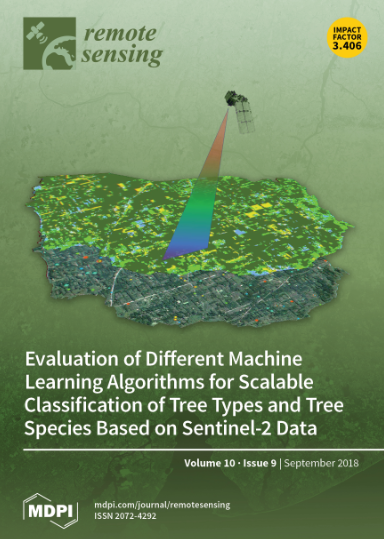Unifying Building Instance Extraction and Recognition in UAV Images
IF 4.2
2区 地球科学
Q2 ENVIRONMENTAL SCIENCES
引用次数: 0
Abstract
Building instance extraction and recognition (BEAR) extracts and further recognizes building instances in unmanned aerial vehicle (UAV) images, holds with paramount importance in urban understanding applications. To address this challenge, we propose a unified network, BEAR-Former. Given the difficulty of building instance recognition due to the small area and multiple instances in UAV images, we developed a novel multi-view learning method, Cross-Mixer. This method constructs a cross-regional branch and an intra-regional branch to, respectively, extract the global context dependencies and local spatial structural details of buildings. In the cross-regional branch, we cleverly employed cross-attention and polar coordinate relative position encoding to learn more discriminative features. To solve the BEAR problem end to end, we designed a channel group and fusion module (CGFM) as a shared encoder. The CGFM includes a channel group encoder layer to independently extract features and a channel fusion module to dig out the complementary information for multiple tasks. Additionally, an RoI enhancement strategy was designed to improve model performance. Finally, we introduced a new metric, Recall@(K, iou), to evaluate the performance of the BEAR task. Experimental results demonstrate the effectiveness of our method.统一无人机图像中的建筑实例提取与识别
建筑实例提取与识别(BEAR)可提取并进一步识别无人机(UAV)图像中的建筑实例,在城市理解应用中具有极其重要的意义。为了应对这一挑战,我们提出了一个统一的网络 BEAR-Former。考虑到无人机图像中的小面积和多实例给建筑实例识别带来的困难,我们开发了一种新颖的多视图学习方法--Cross-Mixer。该方法构建了一个跨区域分支和一个区域内分支,分别提取建筑物的全局上下文相关性和局部空间结构细节。在跨区域分支中,我们巧妙地采用了交叉注意力和极坐标相对位置编码来学习更多的判别特征。为了端到端地解决 BEAR 问题,我们设计了一个通道组和融合模块(CGFM)作为共享编码器。CGFM 包括一个用于独立提取特征的通道组编码器层和一个用于为多个任务挖掘互补信息的通道融合模块。此外,我们还设计了一种 RoI 增强策略,以提高模型性能。最后,我们引入了一个新指标 Recall@(K, iou) 来评估 BEAR 任务的性能。实验结果证明了我们方法的有效性。
本文章由计算机程序翻译,如有差异,请以英文原文为准。
求助全文
约1分钟内获得全文
求助全文
来源期刊

Remote Sensing
REMOTE SENSING-
CiteScore
8.30
自引率
24.00%
发文量
5435
审稿时长
20.66 days
期刊介绍:
Remote Sensing (ISSN 2072-4292) publishes regular research papers, reviews, letters and communications covering all aspects of the remote sensing process, from instrument design and signal processing to the retrieval of geophysical parameters and their application in geosciences. Our aim is to encourage scientists to publish experimental, theoretical and computational results in as much detail as possible so that results can be easily reproduced. There is no restriction on the length of the papers. The full experimental details must be provided so that the results can be reproduced.
 求助内容:
求助内容: 应助结果提醒方式:
应助结果提醒方式:


